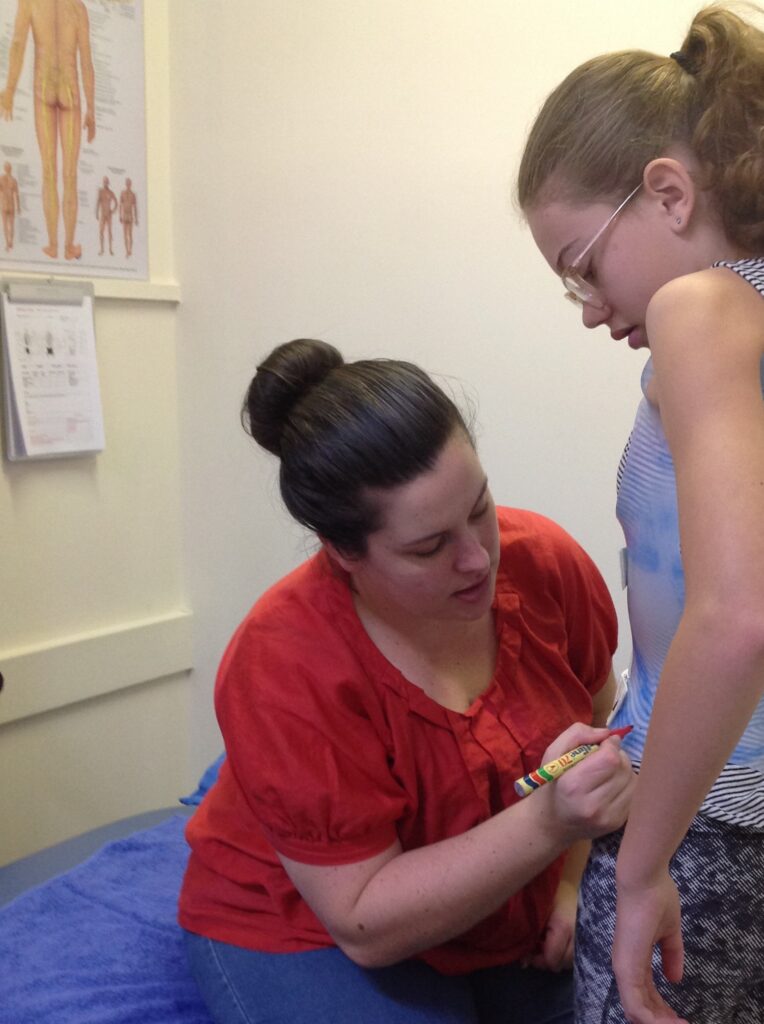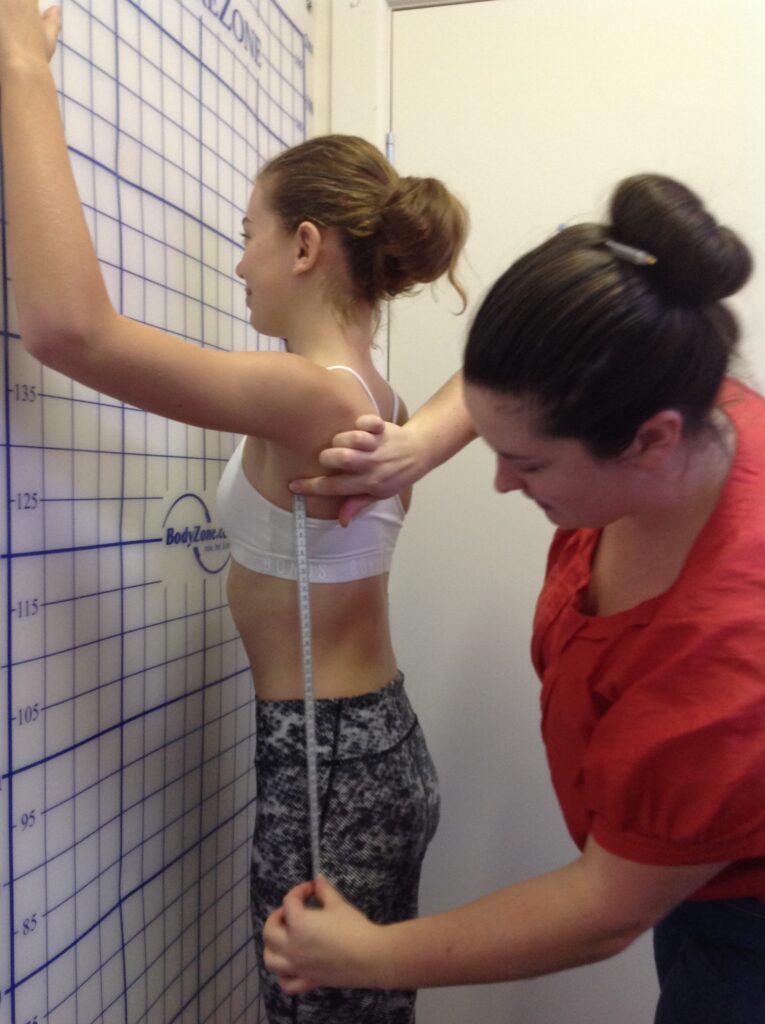The primary aim of adolescent bracing is to stop curves progressing into surgical range
Adolescent scoliosis braces are ‘custom made’ which means that they are created specifically to the individuals curve specifications.
We are fortunate to have a highly experienced bracing team to create a brace for your child or adolescent’s specific scoliosis or juvenile hyperkyphosis.
Bracing for scoliosis is usually recommended when curves progress to 25˚ Cobb and there is still growth remaining in the child or adolescent. The primary aim of this bracing is to stop curves progressing into surgical range (which is usually discussed when curves reach approximately 50˚ Cobb).
A recent study found rigid bracing approximately 70% effective in preventing curves progressing to surgical range. It found the more hours spent in the brace, the better the outcome. Braces that are better accepted by the wearer therefore have increased likelihood of positive outcome.
Rebecca (the director of Scoliosis Physiotherapy) has, above her scoliosis specific physiotherapy training, also completed specific training in 3D bracing biomechanics, assessment and fitting. She closely assesses the adolescent’s torso, taking multiple measures around the ribcage and pelvis and combines this information with a 3D scan of the torso (that she completes in one of our private consultation rooms). After assessing x-rays and taking approximately 20 standing postural photos from 8 different angles, she then works with an international team in its design and fabrication. The brace usually takes 2 weeks to make.
‘Custom made’ means that the brace is created specifically for the individual’s curve specifications. Scoliosis is a 3-dimensional, asymmetric condition so braces subsequently have regions of increased contact over the prominence’s, and regions of non-contact over the hollows. In this way, custom made braces aim to stop progression of the curve and endeavour to guide growth towards a more corrected alignment (encouraging derotation and translation towards as balanced an alignment as possible).
PLEASE NOTE: In Australia it is not permitted for scoliosis brace providers to show photos of the scoliosis braces they provide, nor is it allowed for any of us to specifically name the actual Brace manufacturing team. This is why you will not see here, any photos of our custom-made braces. It is also why we do not name the brace manufacturer – it is illegal for all of us to do so. If you would like to see some of our braces, please organize a time to either come into the practice or have a Telehealth consultation, with Rebecca who will talk you through the specifics.
To check brace effectiveness, one month after being fully weaned in, we refer you to have an in-brace EOS (low dose x-ray, bulk billed).
Having the EOS whilst wearing the brace, enables us to closely assess the effectiveness of the brace on all 3 dimensions of the scoliosis. We re-measure the key outcome measures (Cobb angle, rotation and side view profile) and determine whether any further enhancements could be made to get more curve correction from the brace. We try to achieve as great an in-brace correction as possible (but without compensations!).
We communicate closely with your referring specialist all our findings and any modifications made, thereby promoting the important team approach to scoliosis care.
After the initial assessment, the cost of the brace covers the ‘Brace Fitting’ appointment (3 hours) and the ‘Fine Tuning’ appointment (1 hour). This is how we keep your brace costs down and ensure you only pay for what you need/use.
As a general guide, the following appointments are the usual scheduled appointments:
- Brace Assessment (allow 1.5 hours)
- Brace Fitting appointment (allow 3 hrs, occurs 2-3 weeks after the assessment)
- Fine Tuning appointment (allow 1 hour, occurs 1 month after the Brace Fitting appointment)
- Post in-brace EOS review (allow 1.5 hours, occurs after child/adolescent has been wearing the brace their full recommended hours for 1 month)
- 4 monthly reviews (allow 60 mins, timed to occur the same week as your specialist review where possible)
Should you or your child have any concerns or difficulties at any stage regarding the brace between these scheduled appointments, we provide immediate on phone advice and organize for you to come in for prompt review if needed.
We are happy to answer any questions you may have regarding our bracing and whether bracing may be suitable for you/your child. We also have adolescents and parents happy to share their experiences of our braces and care with you, if you would like to speak to them also. Please don’t hesitate to contact us in any way.


